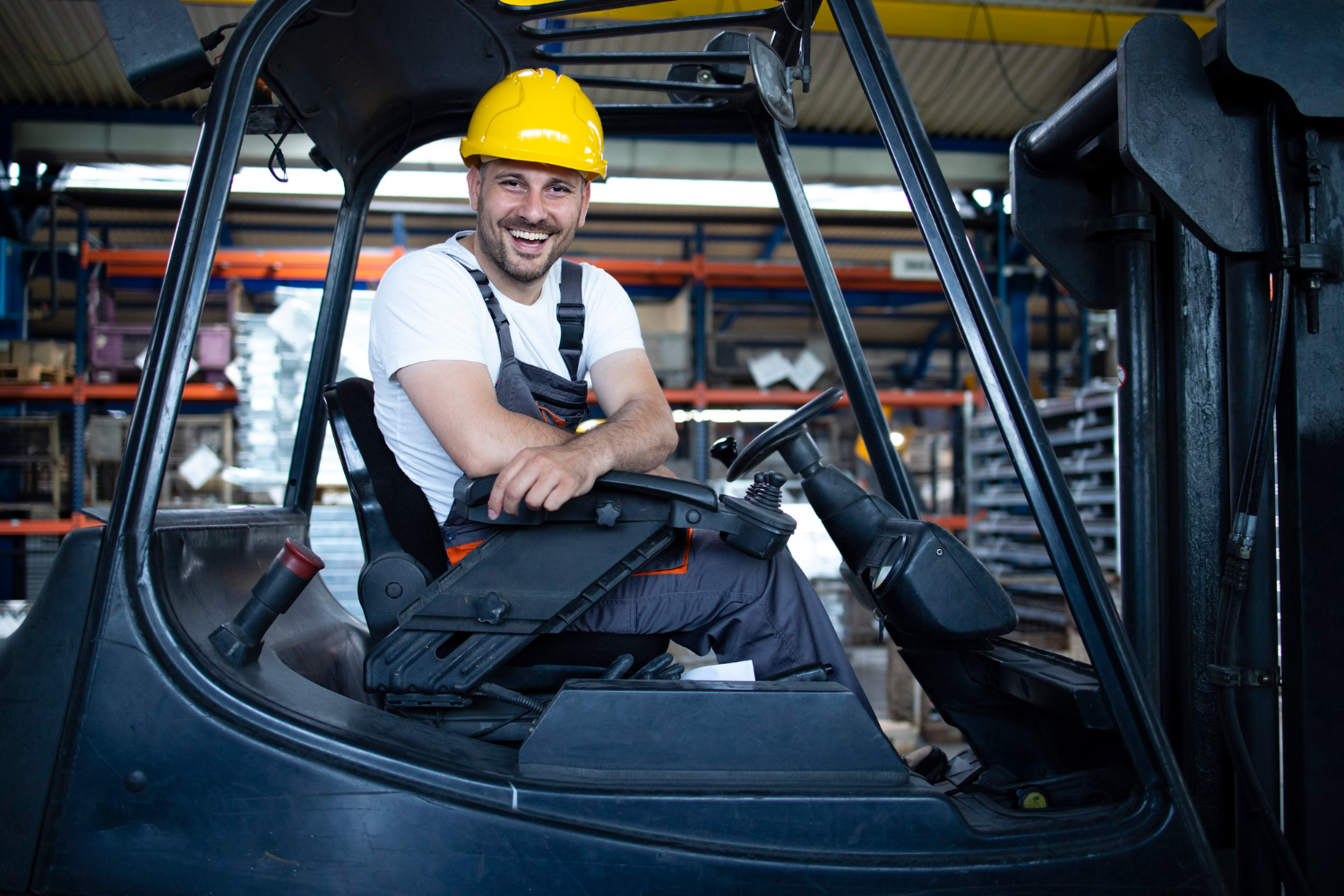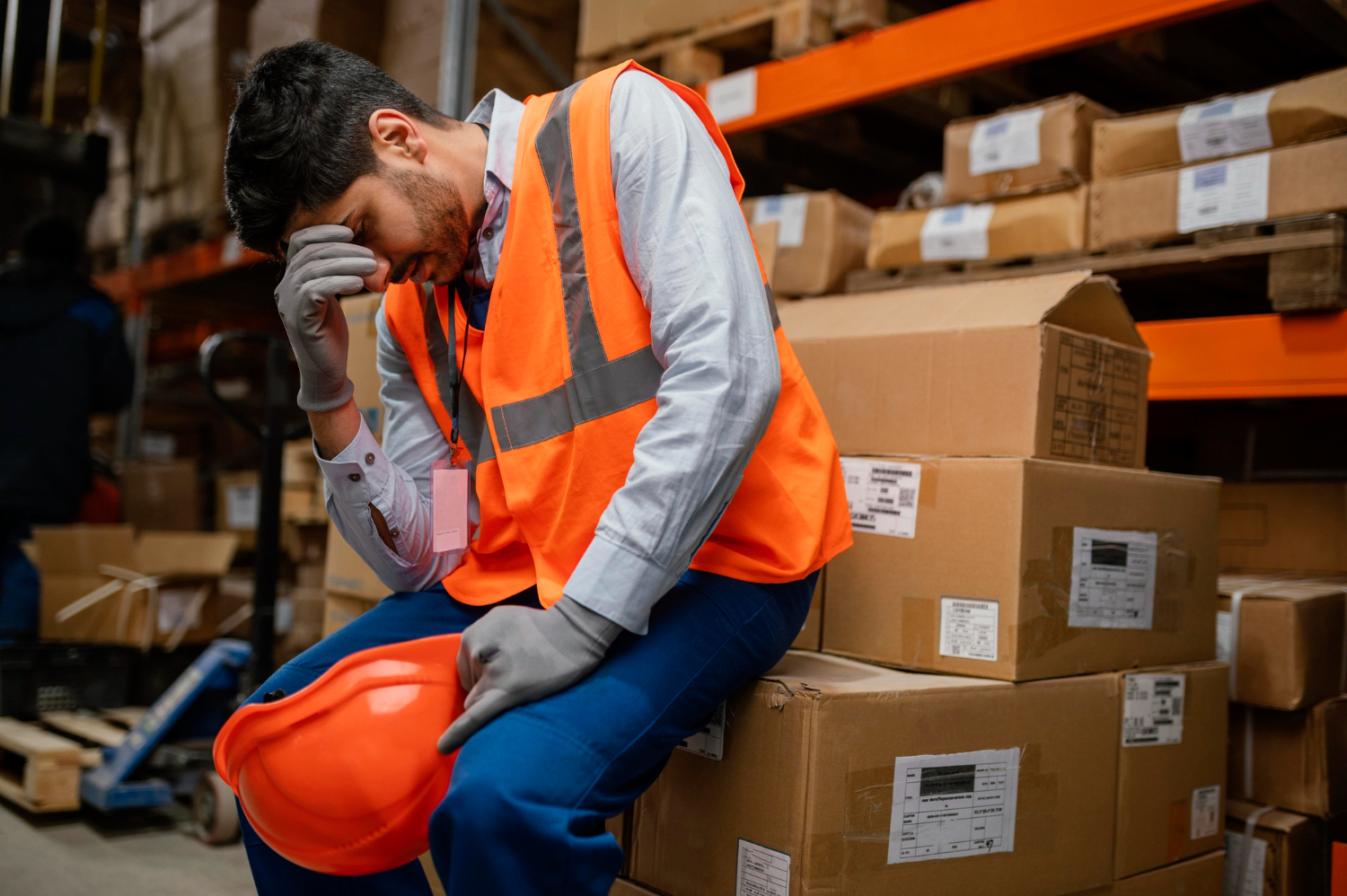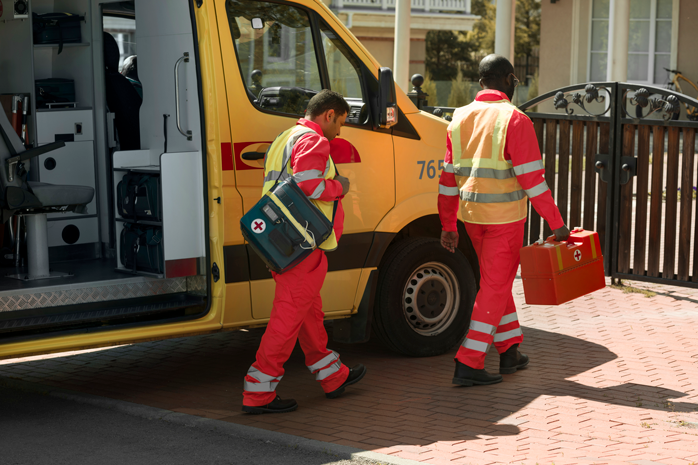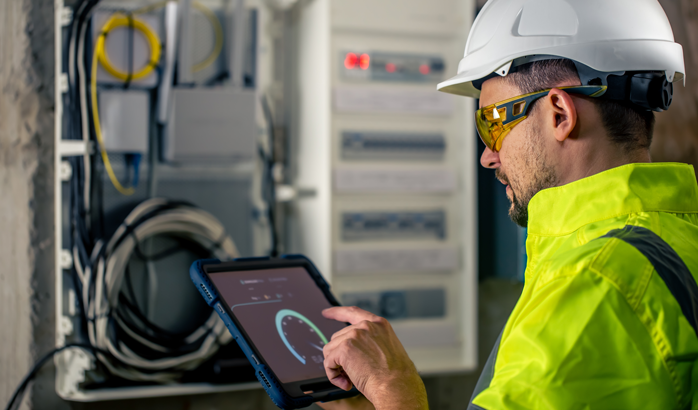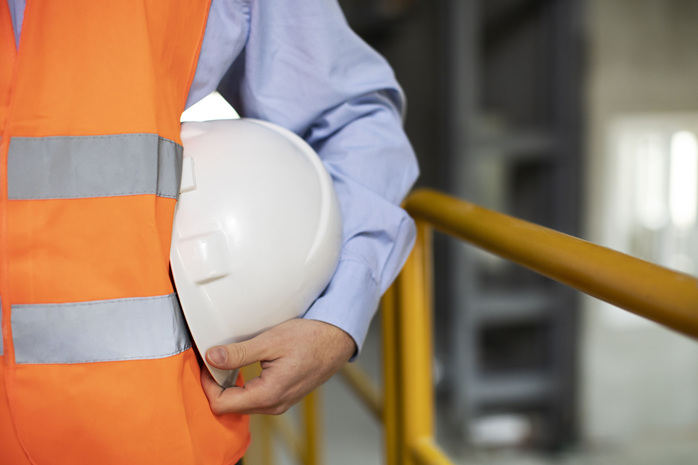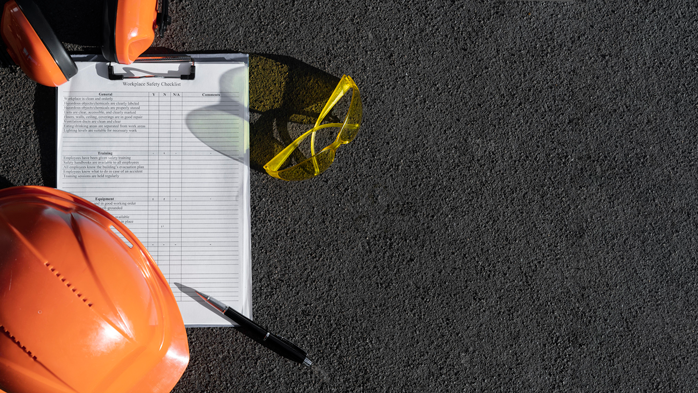Industrial workplaces face significant forklift pedestrian safety challenges when powered industrial trucks and workers share operating spaces. With over 60,000 forklift-related injuries occurring annually, implementing comprehensive forklift and pedestrian safety protocols is essential for OSHA compliance and worker protection. This guide covers current regulations, forklift pedestrian safety systems, injury prevention strategies, and proven safety tips.
Understanding the Scope of Forklift Safety Issues
The statistics surrounding forklift safety are sobering.
According to the National Safety Council, forklifts were the source of 67 work-related deaths in 2023 and 24,960 DART (Days Away, Restricted, or Transferred) cases.
OSHA estimates that between 35,000 and 62,000 injuries occur every year involving forklifts, with approximately 34,900 resulting in serious injury and 61,800 causing non-serious injuries annually.
Source Rosenfield Injury Lawyers,
Perhaps most concerning is that 1 in 10 forklifts are involved in an accident each year, making comprehensive forklift safety protocols not just recommended but essential for any operation involving powered industrial trucks.
What Are the Main Causes of Injuries When Using Forklifts?
Understanding what are the main causes of injuries when using forklifts is critical for developing effective pedestrian forklift safety protocols. Research identifies several primary risk factors responsible for the majority of workplace incidents affecting overall forklift safety performance.
Primary Causes Include:
Tip-Over and Rollover Accidents: These represent some of the most dangerous incidents. Sharp turns, unstable surfaces, improper load carrying, excessive speed, and poor weight distribution significantly increase tip-over risks. Operators who neglect proper turning procedures or drive too fast are particularly vulnerable.
Pedestrian-Related Incidents: Forklifts often operate in close quarters with workers on foot, making pedestrian accidents common. Operator inattention, including fatigue, distracted driving, and carelessness around pedestrians, contributes significantly to these incidents.
Transportation Incidents: According to Bureau of Labor Statistics data, transportation incidents account for 13,240 forklift-related injuries. This category includes accidents like tipping over vehicles, spinning out, or other improper vehicle behavior.
Blind Spot Accidents: Limited visibility, failure to follow posted safety signs, and vehicle-to-vehicle collisions in areas with poor sightlines create dangerous situations.
Operational Factors: Working 12-hour shifts without adequate breaks increases injury risk by 37%, according to OSHA reports. Fatigue and overwork directly impact operator attention and decision-making.
Recommended Read – 9 Hidden Safety Risks That Sabotage Warehouse Operations (And How AI Solves Them)
What Are the OSHA Regulations for Forklifts and Pedestrians?
What are the OSHA regulations for forklifts and pedestrians? This frequently asked question addresses critical workplace safety requirements. The Occupational Safety and Health Administration has established comprehensive regulations under 29 CFR 1910.176 and 29 CFR 1910.178 to protect both forklift operators and pedestrians.
Key OSHA Requirements:
Pathway Marking and Maintenance (29 CFR 1910.176(a)): Pedestrian pathways and walking areas must be clearly marked and remain free from obstructions at all times, particularly in areas with regular forklift activity. This regulation ensures workers have designated safe zones away from vehicle traffic.
Traffic Separation (29 CFR 1910.178): OSHA mandates separating forklift and pedestrian traffic as much as possible. Employers must establish pedestrian walkways with guard rails and strictly enforce their use.
Operator Requirements: Federal law prohibits anyone under 18 years of age from operating a forklift. Additionally, individuals over 18 must receive proper training and certification before operating powered industrial trucks legally.
Warning Systems: Forklift operators must warn pedestrians of their approach through horns, hand signals, or warning lights. Maintaining safe clearance from coworkers is mandatory.
Passenger Restrictions: Forklifts must never carry passengers, and operators must keep arms and legs inside the vehicle confines at all times.
Equipment Standards: Forklifts must have overhead safety guards to protect operators from falling objects, and proper battery charging stations must be designated for electric vehicles.
Forklift Pedestrian Safety Systems and Technology
Modern technology offers numerous solutions to enhance pedestrian safety around forklifts. These systems work by creating awareness, establishing boundaries, and providing early warnings.
Advanced Safety Technologies:
Proximity Detection Systems: These systems use sensors to detect when pedestrians enter dangerous zones around forklifts. When activated, they provide audible and visual warnings to both operators and nearby workers.
Forklift Pedestrian Safety Lights: Forward and rear-facing LED lights project bright lines or patterns on the ground, creating visual boundaries that help pedestrians maintain safe distances from moving equipment. These forklift pedestrian safety lights are increasingly required in high-traffic areas.
Backup Alarms and Strobes: Combination audio-visual warning systems alert pedestrians when forklifts are in reverse or approaching their location.
Zone Management Systems: Advanced systems can establish virtual boundaries around work areas, automatically slowing or stopping forklifts when pedestrians enter restricted zones.
Wearable Technology: Some facilities issue wearable devices to pedestrians that communicate with forklift safety systems, providing real-time location awareness.
Essential Forklift Safety Tips for Operators and Pedestrians
Implementing proven forklift safety tips requires comprehensive attention to operator behavior, pedestrian awareness, and workplace protocols. These evidence-based strategies significantly reduce accident risk.
For Forklift Operators:
Speed Management: Always operate at safe speeds, especially when approaching intersections, corners, or areas with pedestrian traffic. Take corners slowly and maintain control at all times.
Visibility Practices: Use mirrors effectively, sound horns at intersections, and ensure clear sightlines. When carrying loads that obstruct forward vision, operate in reverse.
Load Handling: Never exceed weight capacity, ensure loads are properly balanced, and avoid sudden movements that could cause tip-overs.
Maintenance Awareness: Conduct pre-shift inspections, report mechanical issues immediately, and only operate properly maintained equipment.
Communication: Maintain constant awareness of surroundings, make eye contact with pedestrians when possible, and use established communication protocols.
For Pedestrians:
Stay Alert: Avoid distractions like mobile phones or headphones in areas with forklift traffic. Maintain constant awareness of your surroundings.
Use Designated Pathways: Always use marked pedestrian walkways and never take shortcuts through forklift operating areas.
Make Eye Contact: Ensure forklift operators see you before crossing paths or entering shared spaces.
Understand Right-of-Way: Loaded forklifts have limited stopping ability. Give way to all forklift traffic and never assume operators can see you.
Follow Facility Rules: Adhere to all posted signs, barriers, and safety protocols specific to your workplace.
Workplace Organization and Design
Effective forklift pedestrian safety begins with thoughtful workplace design and organization.
Design Principles:
Physical Separation: Where possible, completely separate pedestrian and forklift traffic through barriers, elevated walkways, or designated time-based access.
Clear Sightlines: Eliminate blind corners through mirrors, improved lighting, and strategic placement of equipment and inventory.
Traffic Flow Management: Design logical traffic patterns that minimize intersections between pedestrians and forklifts.
Signage and Marking: Use clear, visible signage to mark speed limits, right-of-way rules, and restricted areas. Floor markings should be highly visible and regularly maintained.
Emergency Procedures: Establish clear protocols for emergencies, including evacuation routes that don’t interfere with forklift operations.
Training and Certification Requirements
Proper training forms the foundation of forklift safety. OSHA requires comprehensive training programs that address both technical operation and safety awareness.
Training Components:
Operator Certification: All forklift operators must complete formal training covering vehicle operation, safety procedures, and workplace-specific hazards.
Pedestrian Safety Education: All employees working in areas with forklift traffic should receive training on pedestrian safety rules and procedures.
Regular Refresher Training: Periodic retraining ensures operators maintain safe practices and stay current with evolving safety standards.
Incident Response Training: Workers should understand proper procedures for reporting near-misses, accidents, and safety concerns.
Creating a Safety Culture
Sustainable forklift pedestrian safety requires more than just following regulations—it demands a culture where safety is prioritized at every level.
Building Safety Culture:
Leadership Commitment: Management must demonstrate commitment to safety through resource allocation, policy enforcement, and personal involvement.
Employee Engagement: Encourage worker participation in safety committees, incident reporting, and continuous improvement initiatives.
Regular Safety Meetings: Conduct frequent safety discussions, review incidents, and share lessons learned across the organization.
Performance Measurement: Track safety metrics, recognize safe behavior, and address unsafe practices consistently.
Continuous Improvement: Regularly assess and update safety procedures based on new technology, changing operations, and lessons learned from incidents.
Frequently Asked Questions About Forklift Pedestrian Safety
When entering a street from a private alley or driveway you must?
When entering a street from a private alley or driveway you must come to a complete stop, check for oncoming traffic in both directions, and yield right-of-way to all vehicles and pedestrians. This applies to both regular vehicles and forklifts operating in outdoor environments or areas with public access.
What safety equipment is required for forklift pedestrian areas?
Required safety equipment includes overhead guards, backup alarms, mirrors, forklift pedestrian safety lights, designated walkways with barriers, and proper signage marking pedestrian zones and speed limits.
How often should forklift operators receive safety training?
OSHA requires initial certification training and recommends annual refresher training. Additional training is required after accidents, near-misses, or when introducing new equipment or procedures.
What is the most effective forklift pedestrian safety system?
The most effective approach combines physical separation (barriers, elevated walkways), forklift pedestrian safety systems with proximity sensors, visual warning lights, and comprehensive training for all personnel.
Implementing Comprehensive Forklift Pedestrian Safety
Forklift pedestrian safety requires a multi-layered approach combining OSHA regulatory compliance, advanced forklift pedestrian safety systems, comprehensive training, and strong safety culture.
Understanding what are the main causes of injuries when using forklifts enables organizations to implement targeted prevention strategies.
Success depends on addressing primary risk factors including tip-overs, pedestrian incidents, operator fatigue, and visibility issues through systematic solutions. Modern forklift pedestrian safety lights, proximity detection systems, and zone management technology provide powerful accident prevention tools when combined with proper training and workplace design.
Organizations seeking to improve their safety performance should prioritize physical separation of forklift and pedestrian traffic, implement comprehensive forklift safety tips, ensure full OSHA compliance, and foster a culture where safety excellence is non-negotiable.
Connect with Observia.ai’s Safety Experts Today
With Observia, the ROI on pedestrian forklift safety is clear: reduced injury costs, better insurance rates, improved efficiency, and the peace of mind that comes with protecting your people
For expert consultation on implementing forklift and pedestrian safety solutions in your facility, contact certified safety professionals who can assess your specific risks and recommend appropriate forklift pedestrian safety systems for your operations.
